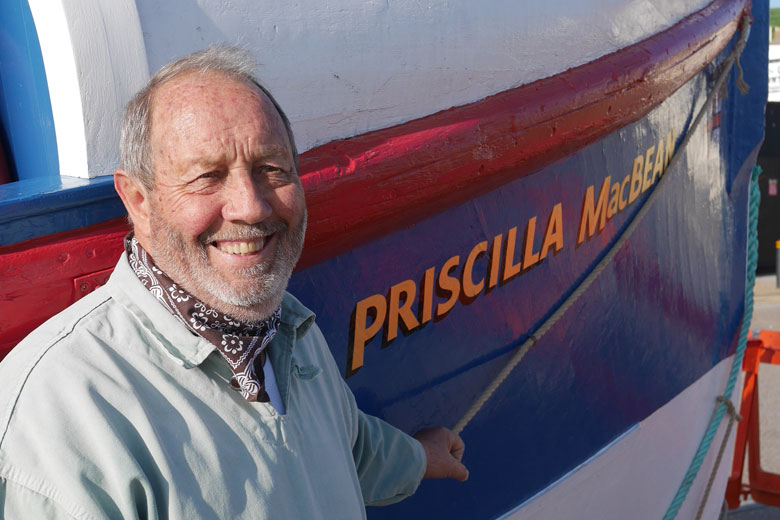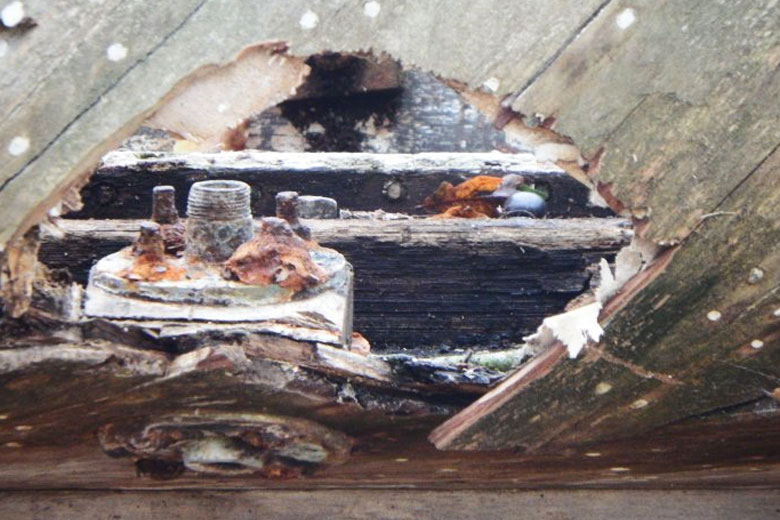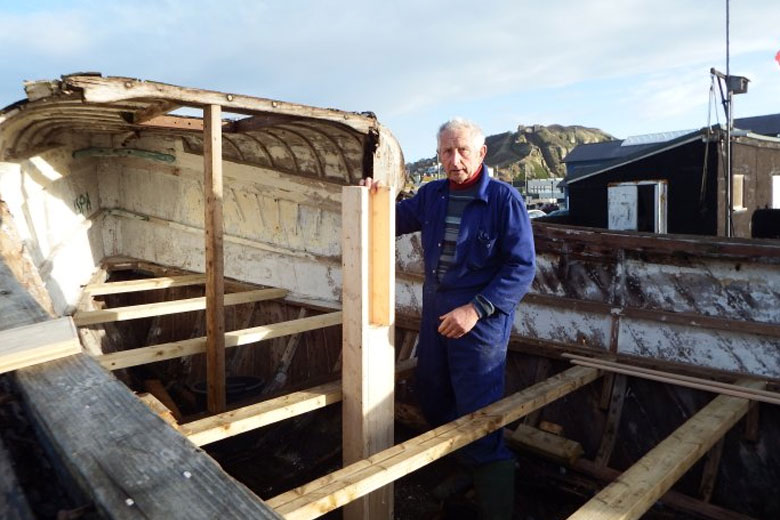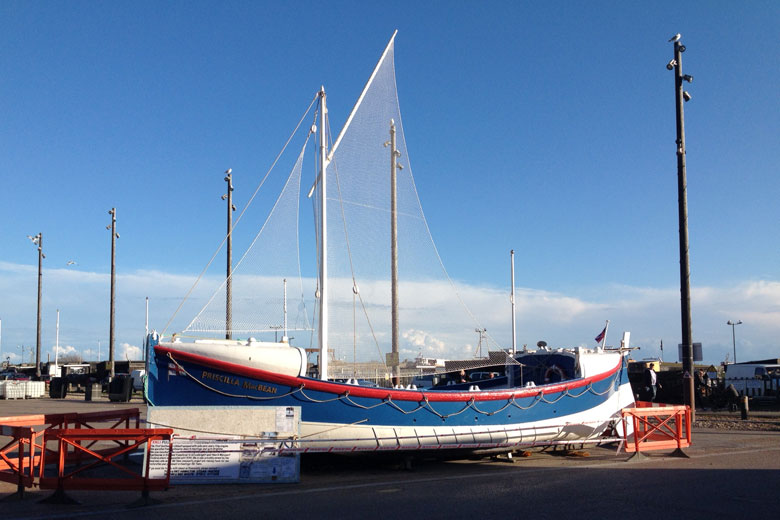Back from the brink
Soon to take up proud permanent residence at the gateway to Hastings Old Town, the lovingly restored RNLI lifeboat Priscilla MacBean is a terrific story of a coastal community coming together to preserve its heritage. Louise Bell meets organiser Dee-Day White.

Looking at the Priscilla MacBean, all gleaming woodwork and pristine paint job, it’s hard to believe that just a year ago she was lying abandoned in a field in the East Sussex village of Hellingly. Nearly 20 years of neglect had left the former Eastbourne lifeboat a wreck, smothered in brambles and nettles and with a substantial tree growing up through the deck.
“When my nephew first saw her he said to me, ‘You know what she needs, don’t you? A box of Swan Vestas!’” says Dee-Day White, a Hastings-born antiques dealer and property developer who stumbled across the boat when visiting a client. Battered and broken as she was, though, Dee-Day immediately recognised the Priscilla MacBean for what she was – a vital link in the history of both the RNLI and the Sussex coastline.
The Priscilla MacBean was built in 1921 by J Samuel White, a boatbuilder based in Cowes on the Isle of Wight, to serve as a lifeboat at Eastbourne. Unusually for the time, she had an engine, rather than just sails and oars. “The crew didn’t like it though,” says Dee-Day. “It was noisy, smelly and they couldn’t have a fag while they were filling it up with petrol.” More importantly, the boat’s long narrow profile made it unstable on the short, choppy waters of the English Channel.

So in 1928, she moved to Scotland, her distinctive shape better suited to northern waters. Later that same year, the decision to move her was vindicated in tragic fashion when the Rye lifeboat Mary Stanford, built to exactly the same pattern as the Priscilla MacBean, overturned in a storm, drowning all 17 crew members on board.
From Scotland, the Priscilla MacBean continued her odyssey. She spent time in France, and as a houseboat on Lake Windermere, before returning to Eastbourne where she languished on the beach before eventually being bought by Dee-Day’s Hellingly client, who had intended to turn her into a chicken shed. By this point she was at her lowest ebb. “The chap told me it cost more to move her to his garden than it did to buy her,” says Dee-Day.
But the story of the Priscilla MacBean was far from over. “I couldn’t leave her there,” says Dee-Day. “She was too important – to the lifeboat service, and to the local area.” He also recognised the opportunity to remember and honour those who drowned at Rye. “The Mary Stanford went down on 15 November, and we wrote the cheque for the Priscilla MacBean on 17 November 2013. I decided then that we’d do everything we could to have her ready for this year’s anniversary.”

Dee-Day, along with veteran Hastings fisherman and fishmonger John “Tush” Hamilton, who bought the boat along with him, swung into action. Local recovery firm Elva agreed to transport the Priscilla MacBean back to Hastings, while local businesses and residents gave materials and money towards the restoration. An ad in the local paper asking for volunteers yielded 27 responses. The team – ranging in age from 14 to 84 – worked tirelessly all through the winter, spring and summer, using the original plans supplied by Samuel White as well as photographs of the Priscilla MacBean in her heyday supplied by the Eastbourne Museum as a guide.
“The local support has been unbelievable,” says Dee-Day. “Everyone feels like it’s their boat.” As if to prove the point Dee-Day greets a passer-by. “That’s Dave,” he says. “He donated the mast.” Tush Hamilton made a sail from old fishing nets, and in all hundreds of people have given money, time and resources.

Many more are expected to turn out to see the Priscilla MacBean progress through Hastings this Saturday, November 15. Father Robert Featherstone, the Old Town’s parish priest, will bless the boat in memory of the Rye crew who lost their lives, then a team including local lifeboat crews, the Hastings Bonfire Society, Hastings MP Amber Rudd, three mayors and two town criers will haul the boat to her new resting place beside The Bourne, the main road leading to the fishing beach, while the Old Town churches ring out a special peal for the occasion.
So how does Dee-Day feel now that this extraordinary project is complete? “Relieved!” he says. “It was a pretty tough deadline we set ourselves. But I’m delighted to see how this has brought people together. The lifeboat is something that touches so many people. When the man came from UK Power to connect up the floodlights for us, it turned out the Priscilla MacBean rescued his dad when he was a fisherman. The 16-year-old boy who’s going to smash a bottle of champagne over the bow on Saturday is a descendant of someone who drowned on board the Mary Stanford. It’s a part of all our lives.”






